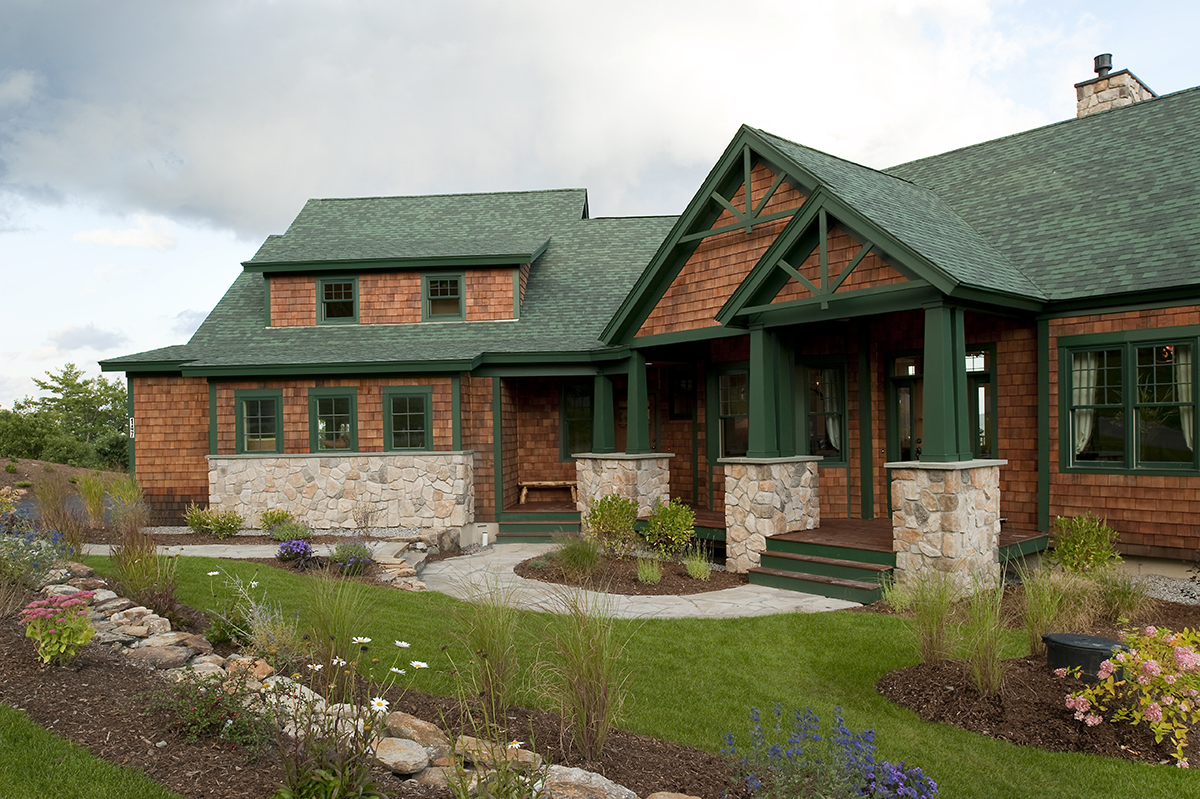Low-Maintenance Landscaping in the Lakes Region

Having a beautifully landscaped yard can bring you and your family endless enjoyment. But it can also bring headaches and high bills if your lawn and gardens require a lot of tedious maintenance. You can enjoy the natural beauty of your yard with less maintenance and lower water bills by creating a landscaping plan that integrates best practices for planting, soil sustenance, mulching and the use of native, drought-resistance plants and grasses. By selecting plant species that are already adapted to New Hampshire’s natural environment, you can substantially reduce the amount of weeding and watering you do to keep your yard looking its best – leaving more time to cruise Winnipesaukee’s waters and soak up the sun. Stick to these simple low-maintenance landscaping guidelines, and you’ll fall in love with your yard.
Timing is Everything
In order for your newly planted grass, shrubs, flowers or trees to best establish themselves, you should plant them during the seasons that will prove most fruitful to their lifelong growth. If you’ve been daydreaming about adding a pale pink Dogwood or a fragrant Lilac bush to your garden, the best time to plant balled-and-burlapped trees and shrubs in New Hampshire is the early spring before the buds pop. Trees and shrubs grown in containers should be planted in warm soils during the summer or fall.
The best time to plant grass seed in New Hampshire is between August and September; this helps prevent weed infestation and promotes a strong root system. To avoid having to constantly water your lawn, you can use a drought-tolerant grass seed mix. One of the hottest products on the market right now is Pearl’s Premium, which is a drought-tolerant, chemical-free, deep root grass seed that requires mowing only once a month. This and other grass seeds on the market provide new options for homeowners who want a lush lawn without the labor.
Success is in the Soil
While it’s important to plant plants at the most optimum time, it is just as important to create soil conditions that are conducive to the continued prosperity (and prettiness) of your gardens all season long. To achieve this, you should underlay your garden beds with at least six inches of topsoil in order to minimize the amount of watering and fertilization that go in-to keeping your plants happy. If amendments are needed to maintain soil nutrition, consider using a natural or organic slow-release fertilizer.
You can also improve soil aeration and water retention by mixing compost into the topsoil. This will greatly promote the fertility of your flowers. Compost can be purchased at your local gardening store or you can create compost in your own backyard by dumping organic waste (coffee grounds, fruit cores, weeds) in a specific pile or bucket in your yard with topsoil and red wiggler worms, which will break down the organic material and create naturally rich soil to dress your beds. For more information about all things composting, click here.
New Hampshire Natives
Vegetation native to New Hampshire is adapted to the natural climate, so if you plant native species in your yard, they’ll require little to no watering once established. You can even go so far as to purchase native tree and shrub saplings grown right here in the Granite State at the N.H. State Forest Nursery. To minimize lawn areas that require mowing, you can plant native wildflower meadows – which look especially beautiful against a lake view backdrop.
The Magic’s in the Mulch
If your arch enemies include dandelions, quackgrass, and ragweed, consider mulching one of your best defense mechanisms. Mulch eradicates weeds by depriving them of the light they need to germinate and grow. You should mulch shrub, tree, and flower beds with two to four inches of shredded wood, chopped leaves and bark, compost, or many other organic materials. A great way to easily mulch your lawn is to leave the clippings on the grass after mowing.
Some tall-tale mulching tactics to avoid include using peat moss as a form of mulch; though it does an excellent job of retaining water, it can actually pull water from the soil beneath it and deprive your plants of the moisture they need. You should also avoid using non-porous decorative gravel, marble chips, shells, or stones as a form of mulch in your gardens. Though they may add an attractive texture to your yard, they act as heat sinks and end up drying out the soil.
If you don’t want to break your back or the bank maintaining a beautifully landscaped yard, these tips will help you steer clear of becoming a slave to your lawn and gardens. While living in a gorgeous lakeside home in a scenic natural setting may motivate you to maintain a perfectly manicured yard, you don’t have to lose the daylight fighting off weeds or watering with no end in sight. Instead, follow the simple guidelines above and you can spend your summertime creating lasting lakeside memories with your family and friends.
Do you have any low-maintenance landscaping recommendations for our readers? Let us know in the comments!




